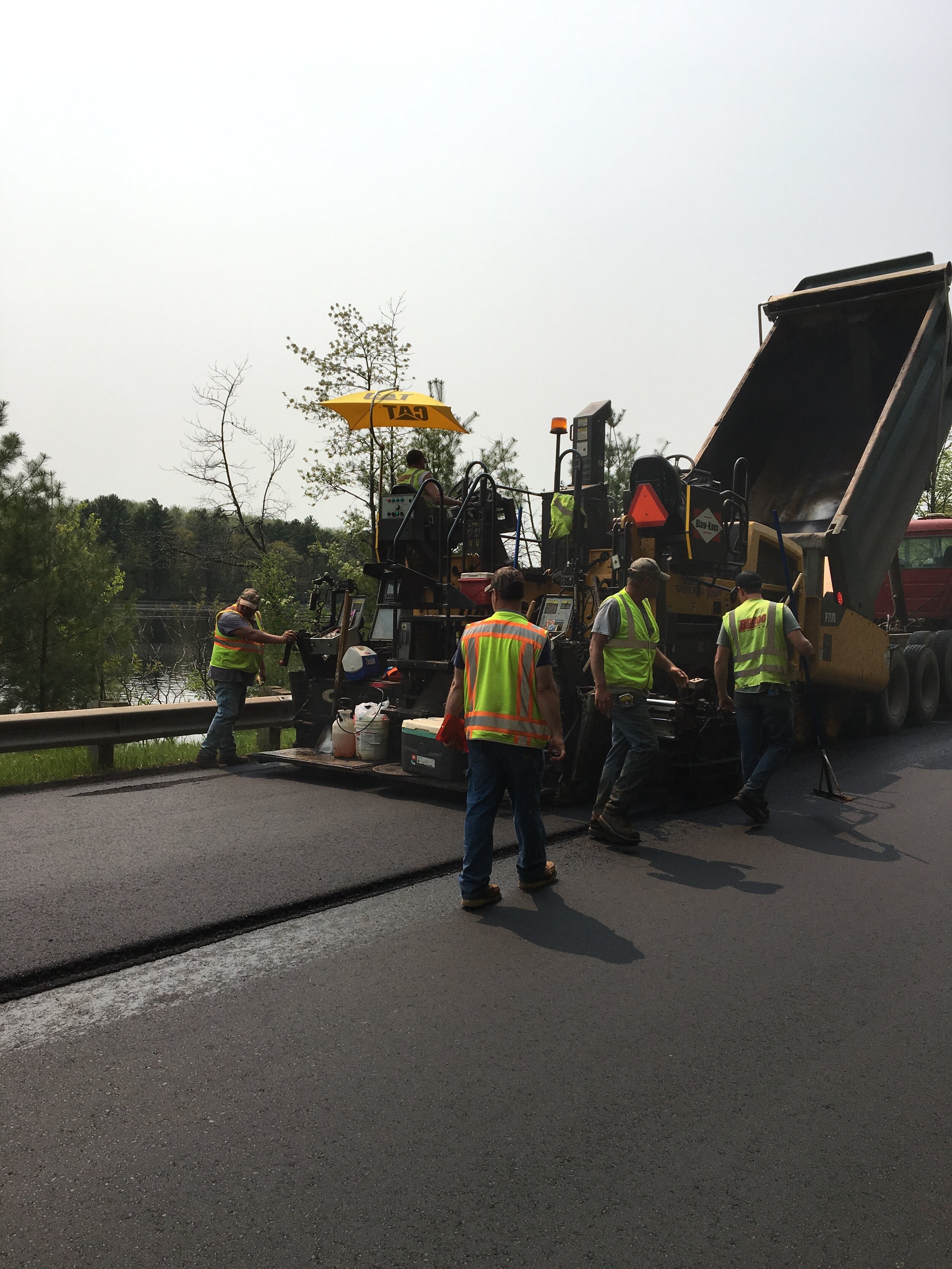Circular ROADS Economy: Using Scrap Tire Rubber to ‘fix the damn roads’
Dickinson County Road Project Demonstrates Performance and Cost Benefits of Using Scrap Tire Rubber in Asphalt Pavement
The Challenge
Fix the damn roads! Michiganders have heard this call for action and yet, the roads continue to be dotted with potholes and scarred with cracks and ruts caused by freezing winters and hot summers. The dire road conditions in Michigan are further exacerbated by deferred maintenance due to funding constraints, political gridlock, higher gross weight limits for trucks, and status quo thinking. The economic and safety impact of sub-standard roads can be measured in car repair costs and overall transportation safety. It’s a big deal!
One promising circular economy solution to this problem is the utilization of rubber-modified asphalt (RMA). RMA blends shredded scrap tires into asphalt, resulting in more durable and quieter roads that are cost effective over the long run. RMA is also environmentally friendly because using recycled tire rubber in pavement keeps scrap tires out the landfill or from being burned as fuel.
The Solution: A Demonstration Project
With funding from the Michigan Department of Environment, Great Lakes, and Energy (EGLE), the Dickinson County Road Commission, located in Michigan’s Upper Peninsula, partnered with Michigan Technological University (MTU) to demonstrate that RMA can perform in cold climates. The project on County Road 607 compared three paving applications, each on 3,330 feet consecutive sections of road: 1) conventional hot mix asphalt base top layer over conventional base layer as control, 2) engineered crumb rubber hot mix asphalt top layer with conventional asphalt base layer, and 3) hot mix base with engineered crumb rubber as both the base and top layers. All told, the Dickinson project utilized over 3,600 scrap tires ground into what is called crumb rubber, also known as shredded tires.
The Results
After two winters, the Dickinson County Road Commission reported that performance tests conducted by MTU show that RMA provides increased resistance to both rutting during hot temperatures and cracking during cold weather than conventional asphalt.
"Our hopes are that this project will demonstrate that rubberized asphalt not only is smoother, quieter, and longer lasting than traditional asphalt, but can also be made economically," stated Lance Malburg, Dickinson County highway engineer.
Next Steps: Time for More
There’s nothing like success to create momentum for more RMA road miles. Creating new markets for scrap tires, such as RMA, is a priority for EGLE’s Scrap Tire Program market development grants. Grant funding enables enterprising county road commissions to work with scrap tire recycling companies and paver companies to implement more RMA miles of pavement - a cost-effective and environmental solution that contributes to fixing the damn roads.
Yet, even with a growing portfolio of successful RMA projects, the state of Michigan still lags way behind other states like Massachusetts, Texas, Illinois, and California, which have readily embraced RMA. Many people argue that now is the time to more widely adopt RMA, especially with the federal infrastructure funding in the works. A necessary step will be for the Michigan Department of Transportation to offer a stamp of approval for permissible RMA paving specifications. Projects like Dickinson County are key steps in Michigan’s steady march to better roads and a more circular economy; a key goal of the state’s NextCycle Michigan Initiative.
Photos: Paving stretch of County Road 607 with RMA; Stock image of tire pile courtesy of Shutterstock

